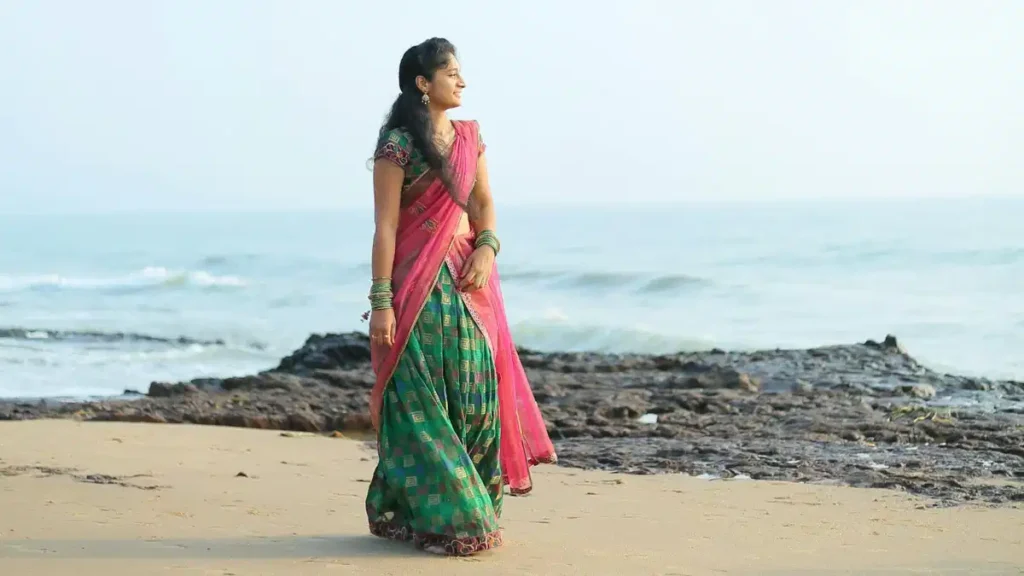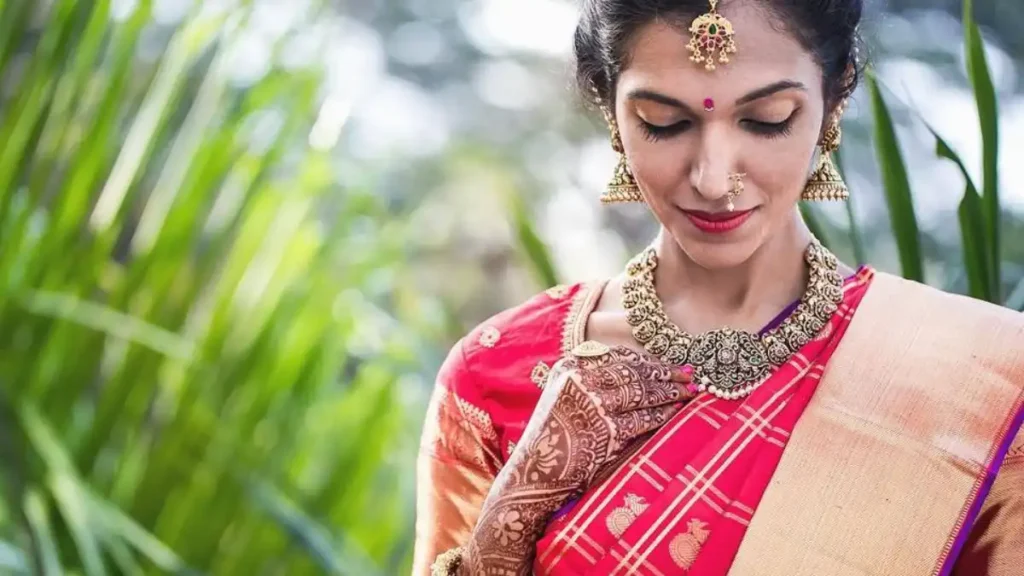Interesting Facts About Saree: The most ethereal article of apparel is the Saree or sari, a traditional garment from the Indian subcontinent that has spread around the world and is currently worn by people of all ages and genders as a versatile fashion statement.

Although the sari is a common traditional garment, millions of Indian women misrepresent it as being easy to wear. Here are five fascinating facts about indian saree that reveal more about it than you may have known!
5 Interesting Facts About Saree

1. Draping Can Be Done in Approximately 100 Ways.
One of the fun facts about saree is that there are more than a hundred ways to tie a sari. The reason for this enormous variety is that different countries have different geographies and cultures. Consider India as an example, where the wearing of saris has been inspired by numerous cultures. Remember that there is no one right method to drape, whether it is in the traditional Nivi style or the visually stunning Bengali or Gujarati style.
2. The Clothing Is Older Than You Anticipated
Saris are thought to be as old as 5000 years old, and are frequently cited as the oldest clothing item to withstand the test of time. Up to 100 BC is the first known archive that wears a sari. Saris are portrayed in numerous statues from the second century, and in a variety of styles.
The clothing has also been frequently referenced in well-known Tamil epics like Silapathikaram and Kadambari. That’s why saree is very important in indian culture.

3. Never once were there petticoats or blouses
When it comes to donning a sari, there was no such thing as a blouse or petticoats back then. Actually, before they existed, ladies would drape saris around themselves without the need of pins.
Blouses and petticoats were only fashionable during the Colonial era, with the arrival of the British. Victorian morality held that it was wrong to show one’s chest, and colonies—India included—were forced to live by this moral code.
4. Every Color Has A Significance
In the past, a sari’s color was traditionally very important, and it is still rigorously regarded in some circumstances.
For instance, a Hindu widow wears a white sari, which symbolizes sadness. In addition to being worn during marriages, red is linked to fertility. Wearing yellow saris is associated with ascetic activities and the time immediately after childbirth. Nonetheless, modernism has been a significant component for the younger customers of the clothing, meaning that such ideas are only adhered to when absolutely necessary.

5. The Motifs’ Beauties
One of the saree facts is that each design in Saris denotes something, they are traditionally significant. For instance, elephant designs, which stand for both monarchy and water, are common in saris. Conversely, designs including parrots are symbolic of passion.
Additionally, fish patterns—which stand for ingenuity and fertility—can be found on saris. It should be mentioned that designs are also evolving in these dynamic times. The number of saris with floral motifs has increased, and modern styles are also being shown more frequently.
Read more: 7 Reasons Selfies Are Good For Your Health











